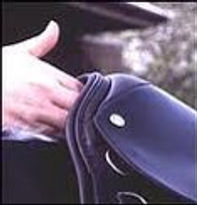Cambridgeshire - Essex - Hertfordshire - Suffolk
21 Debden Road, Saffron Walden, Essex CB11 4AA • 07939 014425 •

What Happens at a Consultation?
At the initial consultation, a case history will be taken. This will cover the presenting complaint and any previous injuries and health problems. Dental, farriery and tack fitting is also taken into consideration.
A standing examination, followed by walk/trot up and if required either work on the lunge or under saddle depending on the presenting complaint. Next the osteopath will examine the mobility of the joints and flexibility of the soft tissues of the horse.
Copyright © Soraya Bish Registered Osteopath
Website Designed by Mark Newman
This thorough examination enables the osteopath to make a diagnosis of why the horse is either lame or not working to its full capabilities in a happy relaxed manner. If appropriate, following this assessment, the osteopath will carry out the appropriate treatment consisting of manipulation, soft tissue techniques and stretching. Occasionally cranio-sacral techniques are used to aid the balancing of the tissues through a more subtle and gentle approach.


Throughout the consultation and treatment process it is important to keep your vet informed of how treatment is progressing. It is also important to work alongside your other professionals such as Master Saddlers, Dentists and Farriers. This holistic approach ensures the best of health for your horse and its ongoing ease in its work.


Consideration is also given to any stiffness or injuries the rider may have as harmony between horse and rider is essential in achieving balance for the horse.
Often, as an integral part of the on-going treatment plan for your horse, simple exercises both on the ground and if appropriate under saddle are prescribed. The need for any follow-up treatments will also be discussed. The number of treatments required depends on the presenting complaint and the findings in the initial consultation.